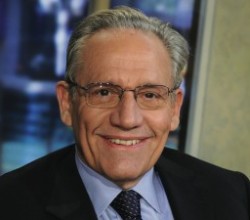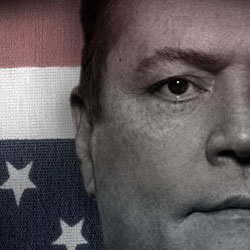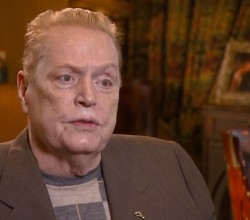Fukushima Updated: What They Won’t Tell You
by Karl Grossman for HUSTLER Magazine
The “whole world” is being “exposed to the radiation from Fukushima,” explains nuclear physicist Dr. Michio Kaku, professor of physics at the City University of New York. The still-ongoing catastrophe at the sixreactor Fukushima Daiichi power plant in Japan has caused radioactivity to be “circulating around the entire Earth.”
Major health impacts can be expected in Japan, of course, but also wherever the Fukushima radioactivity has fallen or will fall, including in the United States, say toxicologist Janette D. Sherman, M.D., and epidemiologist Joseph Mangano of the Radiation and Public Health Project. Already, they’ve discovered that infant mortality in parts of the United States has increased substantially as a result of Fukushima fallout.
Dr. Sherman and Mangano cross-checked data on infant mortality from the Centers for Disease Control and Prevention with records of fallout from the EPA and found that infant mortality had spiked by an average of 35% in eight cities west of the Rocky Mountains and by 48% in Philadelphia during a tenweek span immediately following the March 11, 2011, Fukushima accident. While Philadelphia and cities in Washington (Seattle), Oregon (Portland), Idaho (Boise) and northern California (Sacramento, San Francisco, Santa Cruz, San Jose and Berkeley) reported drastic increases, infant mortality nationwide in this period rose 2.3%. Infant mortality—defined as the death of children from birth to one year old—is considered an early measure of radiation effects because there is rapid growth and cell division at this stage, increasing the impacts of radioactivity.
Cancer is a consequence of radiation that often takes years to manifest. “A global increase in cancer can be expected from the Fukushima discharges,” Dr. Sherman predicts. The radioactive iodine released will produce thyroid cancer, she notes, and “thyroid irregularities” have already been found in children evacuated from the Fukushima area. Cesium-137—another poison discharged in large quantities from Fukushima—will cause cancer in “soft tissues in the body, notably the breast tissue and the pancreas.” And strontium-90, yet another poison released in large amounts, “goes to the bone to cause leukemia.”
Dr. Sherman, an adviser to the National Cancer Institute, has been studying the impact of radiation since working for the U.S. Atomic Energy Commission in the 1950s. Her books include Life’s Delicate Balance: Causes and Prevention of Breast Cancer. She was also editor of Chernobyl: Consequences of the Catastrophe for People and the Environment, published by the New York Academy of Sciences in 2009.
Authored by a team of European scientists, it determined from available medical data that the Chernobyl release caused some 985,000 people to die between 1986—the year of the nuclear power plant accident—and 2004.
“The Fukushima disaster will be worse than Chernobyl,” Dr. Sherman emphasizes. “No question. This is because it is continuing. They have not stopped the releases of radioactivity—God knows if they ever will.” Moreover, the area in that part of Japan is “far more populated” than the region around Chernobyl, about 60 miles from Kiev, Ukraine’s capital.
The lead author of the Chernobyl study, Russian biologist Dr. Alexey Yablokov, agrees. “We are seeing something that has never happened— a multiple reactor catastrophe…happening within 200 kilometers [125 miles] of a metropolis [Tokyo] of 30 million people.”
Other scientists and medical experts concur that Fukushima will have far greater consequences than Chernobyl. Professor Chris Busby of the School of Biomedical Sciences of the University of Ulster in Northern Ireland says, “Chernobyl went up in one go.” But large amounts of radioactivity have been streaming from Fukushima since March 11 and spreading worldwide. “Fukushima is worse,” Busby adds. He projects more than a million deaths worldwide.
Radioactivity has been found in livestock, crops and other produce many miles from the Fukushima complex—including in beef, milk, leafy vegetables and most recently in rice, which constitutes a major part of the Japanese diet. Radioactive fallout has also been spreading to the United States, contaminating water, soil and farm-grown food products. Across the nation, radioactive iodine and cesium have been detected in milk linked to cows eating radioactive grass. In California—one of the few states conducting any kind of testing for radiation in food— strawberries, kale, spinach, arugula, wild-harvested mushrooms and other vegetables have tested positive for radioactive chemicals.
Dr. Helen Caldicott, president emeritus of Physicians for Social Responsibility, says that based on the radioactive releases from Fukushima, she expects fatalities from the catastrophe will end up being “two to five times the million who have died because of Chernobyl.” Many of those deaths will be in Japan, but no place on Earth will escape this grim reality.
Besides blowing in the wind, the poisons from Fukushima are being spread through sea currents and through food, although some nations have restricted certain food imports from Japan. The U.S. Food and Drug Administration has banned the importation of milk, dairy products, fresh vegetables and fruit originating in areas closest to the Fukushima complex—the prefectures of Fukushima, Ibaraki, Tochigi and Gunma. (Japan is divided into 47 local governing units known as prefectures.) Also, the FDA has announced that it is screening for radiation in other foods imported from Japan, including fish. Epidemiologist Mangano comments: “Despite these efforts, many Americans are and should be concerned about the potential risks of importation of food into the U.S from Japan in general.” According to the U.S.
Department of Agriculture, about 2% of the seafood consumed in this country comes from Japan. Scallops are the largest seafood import from Japan, with some 3,300 metric tons (valued at $64 million) shipped to the United States in 2010. Tuna has been the second-biggest Japanese seafood import. Japan provided an estimated 350 metric tons of tuna (worth $4 million) in 2010.
The sea along the Fukushima site provides a vast pathway for spreading radioactivity. The amount of radioactive iodine in seawater near the power plant has been measured as thousands of times over what the government of Japan considers permissible. Fish caught 50 miles off the coast have been found to contain large amounts of radiation. Further, when radioactive poison gets into the marine environment, a “concentration factor” kicks in as the radiation moves up the food chain. Small fish eat radiation-contaminated seaweed, and medium-size fish eat the small fish. Then big fish eat the medium-size fish, and radioactivity becomes increasingly concentrated. Some of the fish affected by the Fukushima radi- ation are migratory, so it’s not just sushi in Tokyo that’s impacted but also fish consumed globally. Ken Buesseler, a senior scientist with the Woods Hole Oceanographic Institution, led a research expedition off the northeast coast of Japan to assess the impact of the Fukushima disaster. Buesseler, a recognized expert in the study of radioisotope geochemistry, reported, “When we saw the numbers—hundreds of millions of becquerels [a measure of radioactivity]—we knew this was the largest delivery of radiation into the ocean ever seen.”
Response to the massive Fukushima radioactive discharges has been a massive cover-up and outright denial. The Nuclear Energy Institute—an influential nuclear industry trade group—claims, “No health effects are expected among the Japanese people as a result of the events at Fukushima.” The American Nuclear Society proclaims on its Web site that “no public ill effects are expected from the Fukushima incident.” Mainstream media have become tired of covering the disaster even though radioactivity continues to stream from the Fukushima reactors. Mangano says that “the absurd belief that no one will be harmed by Fukushima is perhaps the strongest evidence of the pattern of deception and denial by nuclear officials in industry and government.”
And it’s not just a PR effort. There have been systematic moves to prevent scientists from getting the data to connect Fukushima radioactivity to illness and death. On May 3, 2011, after weekly monitoring of radioactivity provided the data that Dr. Sherman and Mangano linked to infant mortality, the EPA announced it would only gather readings every three months. Mangano’s opinion? “Outrageous!”
Jeff Ruch, executive director of Public Employees for Environmental Responsibility, said that with the Fukushima “situation still out of control and expected to continue that way for months, and with elevated radioactivity continuing to show up in the U.S., it is inexplicable that the EPA would shut down its radiation monitoring effort.”
Inexplicable, but in line with the nuclear industry’s traditional PR spin, according to Dr. Jeffrey Patterson, immediate past president of Physicians for Social Responsibility. “There has been a coverup, a minimization of the effects of radioactivity,” Patterson points out, “since the development of nuclear weapons and nuclear technology.” Will the nuclear establishment be able to get away with what would be one of the most outrageous Big Lies of all time—that no one has died because of Fukushima?
“I can’t believe this is going on,” said Professor Frank Daulton, who teaches economics and linguistics at Ryukoku University in Kyoto, Japan, about the Fukushima catastrophe. “This is a nightmare. I’m just afraid this has dealt a nearfatal blow to Japan.”
And the consequences for the rest of the world? Thanks to the clout of the nuclear industry and its chokehold on our politicians, it’s doubtful we will ever get the truth about Fukushima. Of course, that could change if our citizens rise up and demand transparency. But how likely is that?
——————
Karl Grossman is an investigative reporter, board member of BeyondNuclear.org and professor of journalism at the State University of New York’s The College at Old Westbury. His six books include Cover Up: What You Are Not Supposed to Know About Nuclear Power. Grossman, the longtime host of the nationally aired TV program Enviro Close-Up, has also written and narrated Three Mile Island Revisited, The Push to Revive Nuclear Power, Chernobyl: A Million Casualties and other documentaries.

















